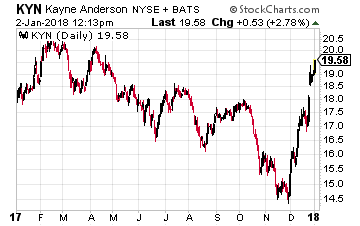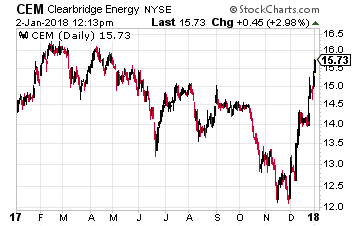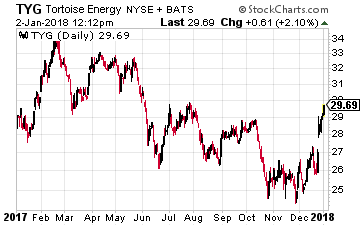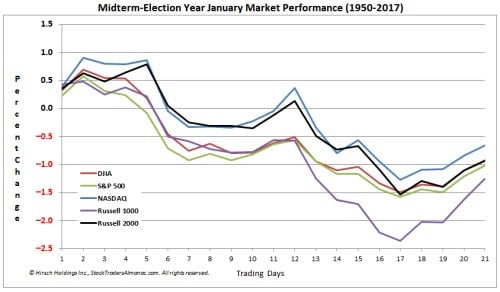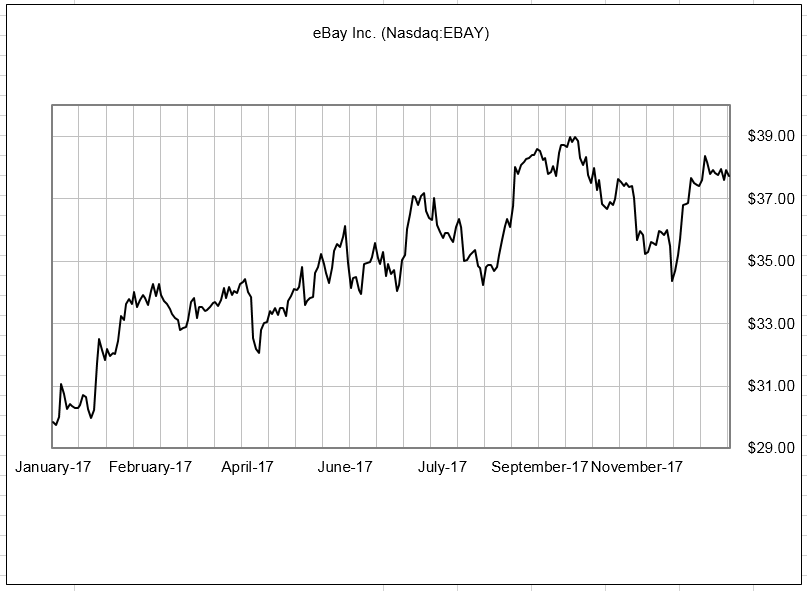“This is an aging bull market. A crash is coming.”
“This bubble market fueled by the Fed is going to crash.”
“Trump’s going to cause the market to crash.”
For nearly all of 2016 and most of 2017, investors have been reading these kinds of headlines.
When I joined Banyan Hill, my first article, “Stocks: The Big Opportunity You’re Missing,”made many investors so angry that they wrote my publisher asking him to have me fired.
In that article, I told you that stocks were a good deal. And I told people that they should be buying stocks instead of panicking and selling them.
Congratulations!
My suggestion to readers was to simply buy the SPDR Dow Jones Industrial Average ETF (NYSE: DIA).
If you were one of the readers who bought this exchange-traded fund, you are now up 65%. Well done and congratulations!

You deserve this because I know how hard it can be to buy when the markets are down.
It also took a lot of guts on your part to buy when most people told you to sell.
Those gains were hard-won by you.
But now that buying stocks is no longer scary, you might be wondering if it’s time for you to cash in your hard-won gains and sell everything.
My GoingUpness System
For sure, stocks are a more popular trade than when I told you to buy in February 2016.
After all, the Dow Jones Industrial Average was up 28% in 2017 alone.
However, 2017’s large gains mean there’s a good chance that 2018’s gains will be smaller. My best guess is something like 8% to 10%, perhaps as high as 15%.
The way I come up with this estimate is by using my GoingUpness system. GoingUpness is the system that I use to pick stocks in my three paid services.
The GoingUpness system is based around the potential demand and supply for stocks. GoingUpness focuses on the most important benefit of owning shares: a rising stock price.
After two years of gains, my GoingUpness system says that at higher prices there are fewer people who are going to come in to buy stocks than in 2016 or 2017. That also means you’ll see some periods where some people cash in and sell.
The bottom line: Less demand and more supply means that you’re going to see smaller gains in 2018.
A Focus on Mega Trends Reveals the Best Stocks to Invest In
However, for certain segments of the market, like the ones I focus on in my paid services, I believe we’ll see much higher returns.
The reason for that is because these stocks are going to be experiencing more growth. More growth means more demand for their stocks and bigger gains.
This is why readers in my Profits Unlimited service have seen gains of over 200% in the Internet of Things (IoT).
Nearly every stock in the Profits Unlimited portfolio is up today. And I fully expect that we’ll see more big winners in 2018.
The reason for these gains, I believe, is a focus on mega trends like the IoT, precision medicine and the millennial generation.
And in 2018, we’ll add new trends:
- Financial technology, or fintech (which includes using technologies like blockchain, mobile payments, peer-to-peer lending and artificial intelligence agents).
- New energy (which includes natural, sustainable, renewable energy, lithium- and hydrogen-based energy sources, and portable, storable and local sourcing).
This focus on mega trends is the reason why I believe Profits Unlimited stocks are going to keep outperforming. And their contributions to market indices like the Dow and the S&P 500 are the reasons why I expect the overall market to keep going up.
That means while stocks are still a good bet for your money, the big mega trends like the ones in Profits Unlimited are going to be an even better bet for your money in 2018.
Regards,

Paul Mampilly
Editor, Profits Unlimited
It’s not silver or platinum. It’s not aluminum, nickel or lithium, either. But this “magic” METAL is found in everything from cars to airplanes, smartphones and computers, even batteries and cosmetics. It even has the power to fight diabetes, depression, weight loss and cancer. It’s worth billions, even trillions. But here’s the problem—this metal is disappearing. The world’s reserves are quickly being sucked dry. But a group of geologists have just struck the motherlode, and the one company behind it could earn investors an absolute fortune as they solve the greatest commodity crisis in human history. [FOR MORE INFORMATION CLICK HERE]
Source: Banyan Hill


